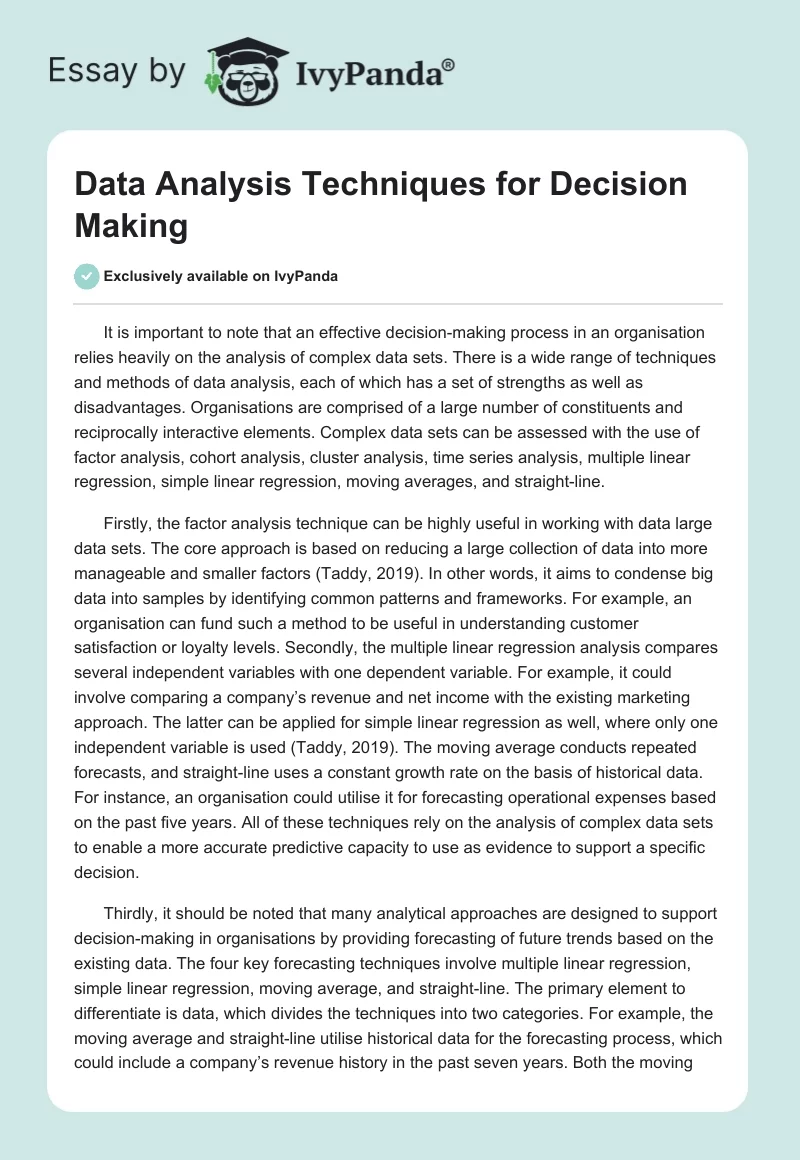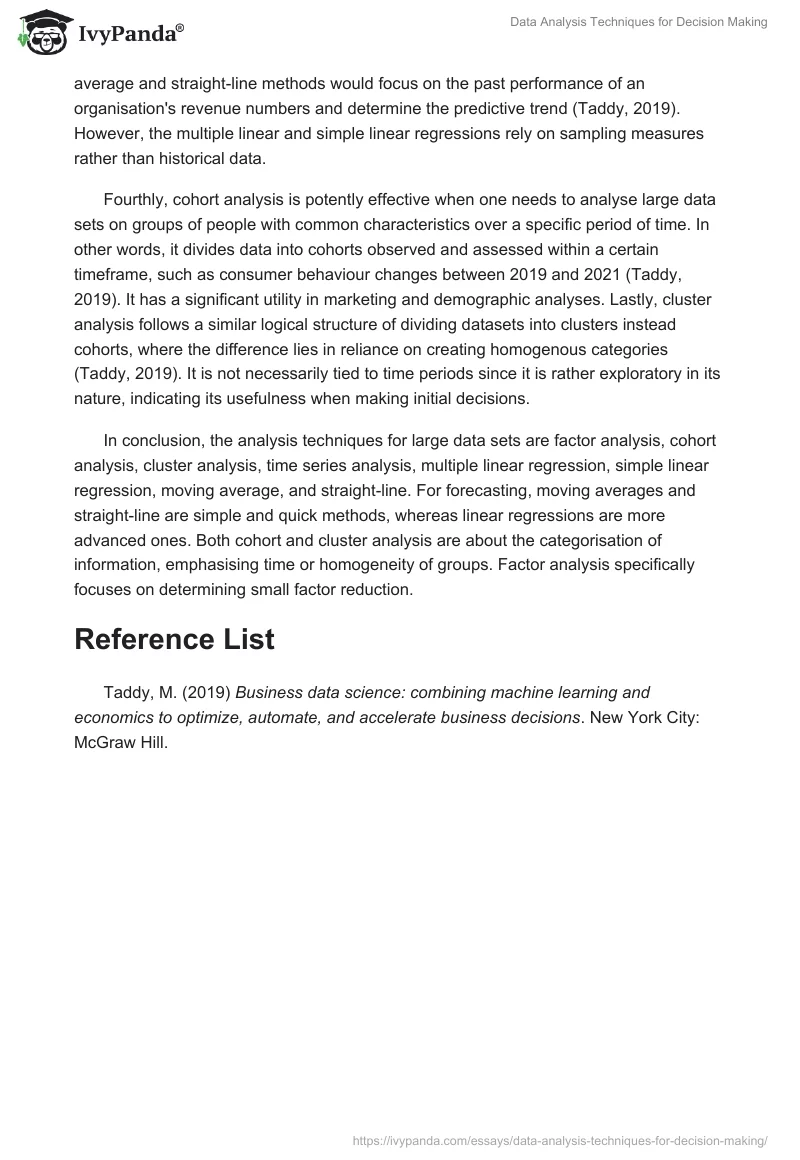It is important to note that an effective decision-making process in an organisation relies heavily on the analysis of complex data sets. There is a wide range of techniques and methods of data analysis, each of which has a set of strengths as well as disadvantages. Organisations are comprised of a large number of constituents and reciprocally interactive elements. Complex data sets can be assessed with the use of factor analysis, cohort analysis, cluster analysis, time series analysis, multiple linear regression, simple linear regression, moving averages, and straight-line.
Firstly, the factor analysis technique can be highly useful in working with data large data sets. The core approach is based on reducing a large collection of data into more manageable and smaller factors (Taddy, 2019). In other words, it aims to condense big data into samples by identifying common patterns and frameworks. For example, an organisation can fund such a method to be useful in understanding customer satisfaction or loyalty levels. Secondly, the multiple linear regression analysis compares several independent variables with one dependent variable. For example, it could involve comparing a company’s revenue and net income with the existing marketing approach. The latter can be applied for simple linear regression as well, where only one independent variable is used (Taddy, 2019). The moving average conducts repeated forecasts, and straight-line uses a constant growth rate on the basis of historical data. For instance, an organisation could utilise it for forecasting operational expenses based on the past five years. All of these techniques rely on the analysis of complex data sets to enable a more accurate predictive capacity to use as evidence to support a specific decision.
Thirdly, it should be noted that many analytical approaches are designed to support decision-making in organisations by providing forecasting of future trends based on the existing data. The four key forecasting techniques involve multiple linear regression, simple linear regression, moving average, and straight-line. The primary element to differentiate is data, which divides the techniques into two categories. For example, the moving average and straight-line utilise historical data for the forecasting process, which could include a company’s revenue history in the past seven years. Both the moving average and straight-line methods would focus on the past performance of an organisation’s revenue numbers and determine the predictive trend (Taddy, 2019). However, the multiple linear and simple linear regressions rely on sampling measures rather than historical data.
Fourthly, cohort analysis is potently effective when one needs to analyse large data sets on groups of people with common characteristics over a specific period of time. In other words, it divides data into cohorts observed and assessed within a certain timeframe, such as consumer behaviour changes between 2019 and 2021 (Taddy, 2019). It has a significant utility in marketing and demographic analyses. Lastly, cluster analysis follows a similar logical structure of dividing datasets into clusters instead cohorts, where the difference lies in reliance on creating homogenous categories (Taddy, 2019). It is not necessarily tied to time periods since it is rather exploratory in its nature, indicating its usefulness when making initial decisions.
In conclusion, the analysis techniques for large data sets are factor analysis, cohort analysis, cluster analysis, time series analysis, multiple linear regression, simple linear regression, moving average, and straight-line. For forecasting, moving averages and straight-line are simple and quick methods, whereas linear regressions are more advanced ones. Both cohort and cluster analysis are about the categorisation of information, emphasising time or homogeneity of groups. Factor analysis specifically focuses on determining small factor reduction.
Reference List
Taddy, M. (2019) Business data science: combining machine learning and economics to optimize, automate, and accelerate business decisions. New York City: McGraw Hill.


